18th Century George III Terrestrial Pocket Globe by Cary, Dated 1791
Sold
Request Information
Follow Us
18th Century George III Terrestrial Pocket Globe by Cary, Dated 1791
A late 18th century 3″ pocket globe signed and dated 1791. Housed in its original sharkskin case. The interior of the case is laid with gorse depicting the northern and southern celestial hemispheres.
A rare 3-inch diameter example of Cary’s pocket globe in a superb sharkskin covered case with two brass hook and eye clasps. The terrestrial globe, itself 3 inches in diameter, covered with copper-engraved hand-coloured gores applied to a plaster and papier maché sphere, the case lined with celestial gorses.
All three voyages of Captain James Cook are marked on the globe, suggesting both the public and Cary’s fascination with these feats of maritime endeavour.
Voyage One. HMS Endeavour, 1768-71. Cook was instructed to undertake a scientific voyage to the Pacific Ocean. He set sail rounding Cape Horn before making landfall in Tahiti, circumnavigating New Zealand, moving up the East Coast of Australia and finally to Indonesia. The newly discovered Endeavour Strait is marked on the globe between Australia and Prince of Wales Island.
Voyage Two. HMS Resolution and HMS Adventure, 1772-75. Cook was commissioned by the Royal Society to sail south in search of the hypothetical Terra Australis. In doing so, Cook became one of the first known explorers to cross the Antarctic Circle. Cook turned to restock in Tahiti just before sighting mainland Antarctica. Terra Australis was not sighted but, having visited New Zealand, the South Sandwich Islands (‘Sandwich Land’ on this globe) were discovered and named.
Voyage Three. HMS Resolution and Discovery, 1776-79. The official public reason for the voyage was to return a pacific islander, from the second voyage, to Tahiti. In reality, the voyage’s principal purpose was to navigate the Northwest passage. Following a stop in Tahiti, Cook made formal contact with Hawaii, before heading north towards the supposed Northwest Passage. While Cook was ultimately unsuccessful in locating the passage, he became the first to chart the majority of America’s Northwestern coast line.
Cook returned to Hawaii where he had previously stopped en route to America. Following an ill-fated encounter with Hawaiians and an argument over ship repairs, Cook and some of his men were killed. This is commemorated on the globe with the inscription ‘Owhyee where Cook was killed 1779’.
The globe also shows the 1780 return journey of the expedition albeit under the command of John Gore and Captain James King. Cook is not the only explorer to be commemorated: amongst other Mackenzie’s 1789 explorations in north-western Canada, showing ‘Mackenzie’s R[iver]’, a decade before Mackenzie’s own maps were published in 1801.
About the makers:
The notable and much celebrated Cary family of cartographers and globe makers were responsible for some of the finest known globes of the period. Having served a seven year engraving apprenticeship under William Palmer, the firm itself was started in London in the late 18th century by John Cary (1755 – 1835) and located at 181 Strand.
In producing globes, John often worked in partnership with his younger brother William Cary (c. 1760 – 1825), a scientific instrument maker. This led to the firm being commonly known as J & W Cary. John is widely regarded as the most influential private map maker of his generation. Both John and William also produced maps and other instruments in addition to their globes. Evidence suggests that it was only the globes that were produced jointly.
The first globes by Cary were advertised in the ‘Traveller’s Companion’ in January 1791. The advertisement mentions that differing sizes of terrestrial globes, including a 3 ½ inch, were available and made from ‘entire new plates’. This was seen as particularly noteworthy – the copper plates for the gores were expensive to produce and often used repeatedly through generations.
See my other listings for the companion celestial globe by Cary.
Condition
Good. Wear consistent with age and use.
Dimensions
Height: 3 in. (7.62 cm)
Diameter: 3 in. (7.62 cm)
PREVIOUSLY SOLD
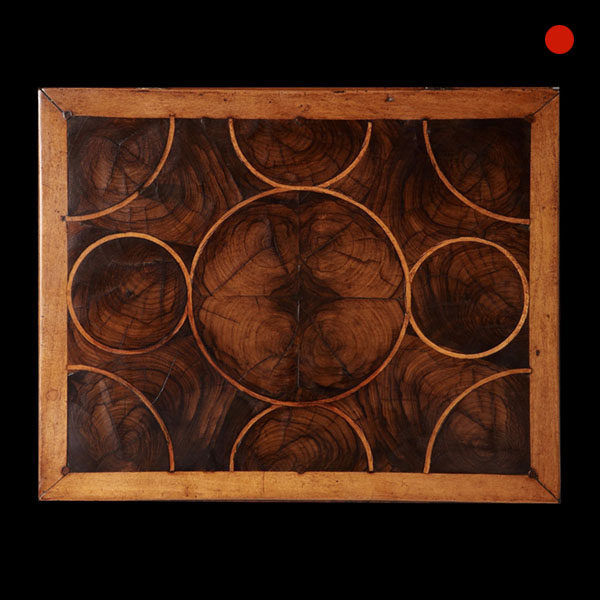
William and Mary Olive Oyster Lace Box
Fabulous 17th-century olive oyster ‘lace box’. ‘Lace boxes’ were popular amongst the middle and higher classes of society from C.1660-1700. The olive oyster box we have for offer here is a lovely original and unusually small example, at just 12″ wide. This form dates from circa 1680-1700.
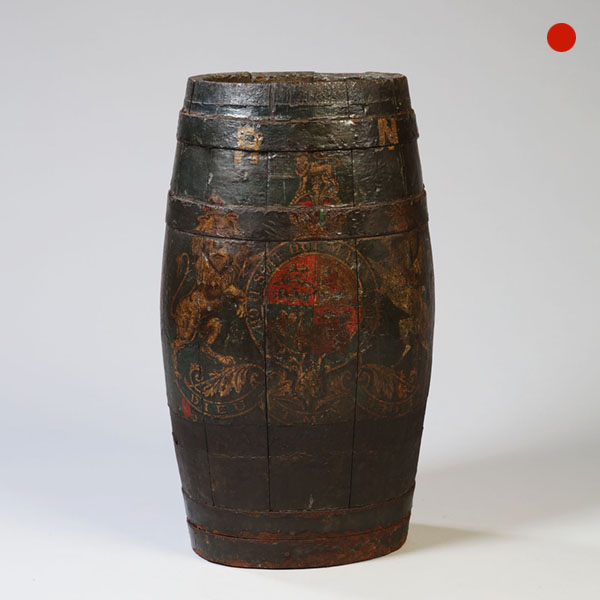
18th-Century Royal Navy Decorated Barrel
A rare 18th-century Royal Navy oak grog or powder barrel, lacquered and decorated with the Royal Coat of Arms. Super piece and makes a fantastic and atmospheric stick/cane stand.
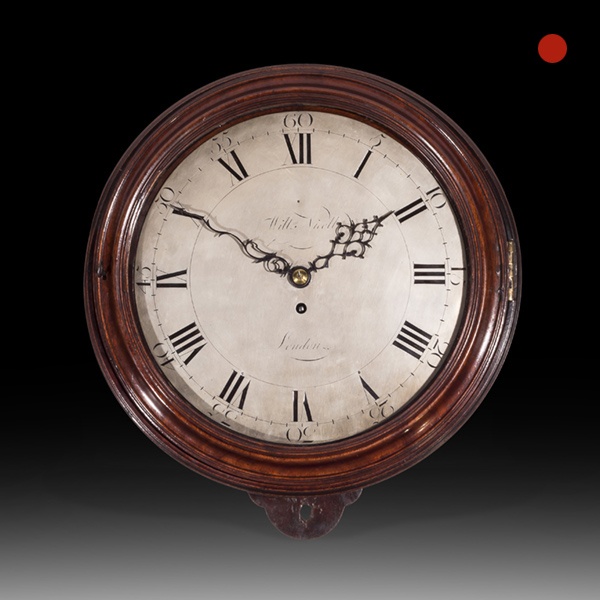
Large Mahogany 18th-Century Dial Clock, William Nicoll, London
The solid mahogany case has a moulded mahogany glazed door, which can be locked on the left-hand side. The original rectangular saltbox is permanently attached to the front and has doors to the side and the bottom.
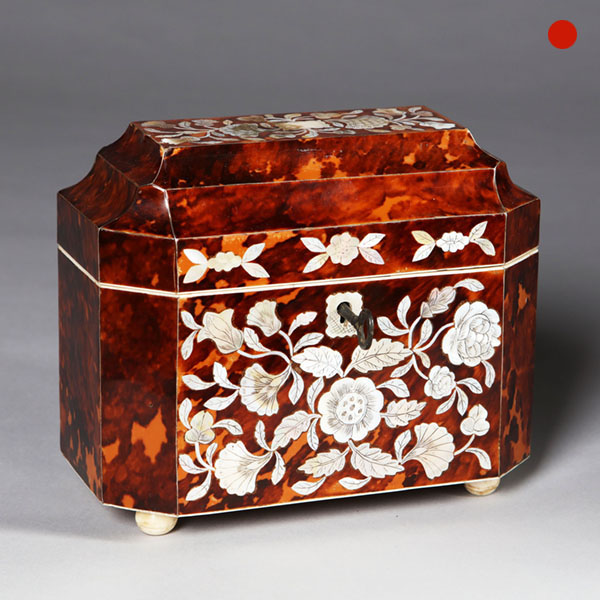
William IV Mother of Pearl Inlaid Tortoiseshell Tea Caddy
William IV Mother of Pearl Inlaid Tortoiseshell Tea Caddy 1800 England SOLDFollow UsWilliam IV Mother of Pearl Inlaid Tortoiseshell Tea Caddy A fine William IV mother of pearl inlaid tortoiseshell tea caddy. The term ‘caddy’ is believed to...
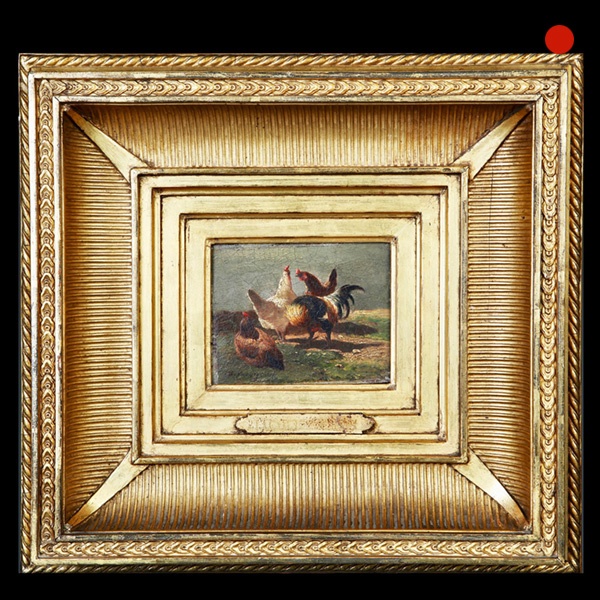
19th-Century Study of a Cockerel and Three Hens Oil Painting on Walnut Panel Charles Emile Jacque (1813-1894)
19th-Century Study of a Cockerel and Three Hens Oil Painting on Walnut Panel Charles Emile Jacque (1813-1894) 1813 to 1894 England SOLDFollow Us19th-Century Study of a Cockerel and Three Hens Oil Painting on Walnut Panel Charles Emile Jacque...
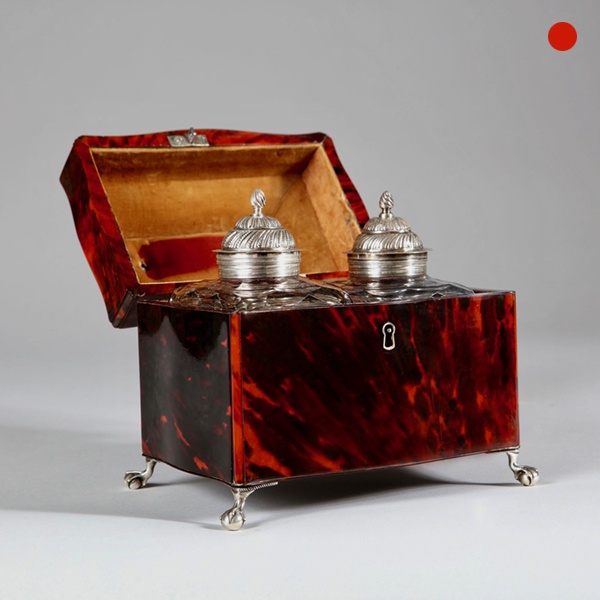
George III Red Tortoiseshell Tea Caddy
A rare exquisitely shaped red tortoiseshell tea caddy, serpentine to all four faces with a pagoda top. The beautifully worked silver handle depicts the Prince of Wales feathers and it is raised on fine ball and claw feet of silver.

William and Mary Olive Oyster Lace Box
Fabulous 17th-century olive oyster ‘lace box’. ‘Lace boxes’ were popular amongst the middle and higher classes of society from C.1660-1700. The olive oyster box we have for offer here is a lovely original and unusually small example, at just 12″ wide. This form dates from circa 1680-1700.

18th-Century Royal Navy Decorated Barrel
A rare 18th-century Royal Navy oak grog or powder barrel, lacquered and decorated with the Royal Coat of Arms. Super piece and makes a fantastic and atmospheric stick/cane stand.

Large Mahogany 18th-Century Dial Clock, William Nicoll, London
The solid mahogany case has a moulded mahogany glazed door, which can be locked on the left-hand side. The original rectangular saltbox is permanently attached to the front and has doors to the side and the bottom.

William IV Mother of Pearl Inlaid Tortoiseshell Tea Caddy
William IV Mother of Pearl Inlaid Tortoiseshell Tea Caddy 1800 England SOLDFollow UsWilliam IV Mother of Pearl Inlaid Tortoiseshell Tea Caddy A fine William IV mother of pearl inlaid tortoiseshell tea caddy. The term ‘caddy’ is believed to...

19th-Century Study of a Cockerel and Three Hens Oil Painting on Walnut Panel Charles Emile Jacque (1813-1894)
19th-Century Study of a Cockerel and Three Hens Oil Painting on Walnut Panel Charles Emile Jacque (1813-1894) 1813 to 1894 England SOLDFollow Us19th-Century Study of a Cockerel and Three Hens Oil Painting on Walnut Panel Charles Emile Jacque...

George III Red Tortoiseshell Tea Caddy
A rare exquisitely shaped red tortoiseshell tea caddy, serpentine to all four faces with a pagoda top. The beautifully worked silver handle depicts the Prince of Wales feathers and it is raised on fine ball and claw feet of silver.
YOU MAY ALSO LIKE
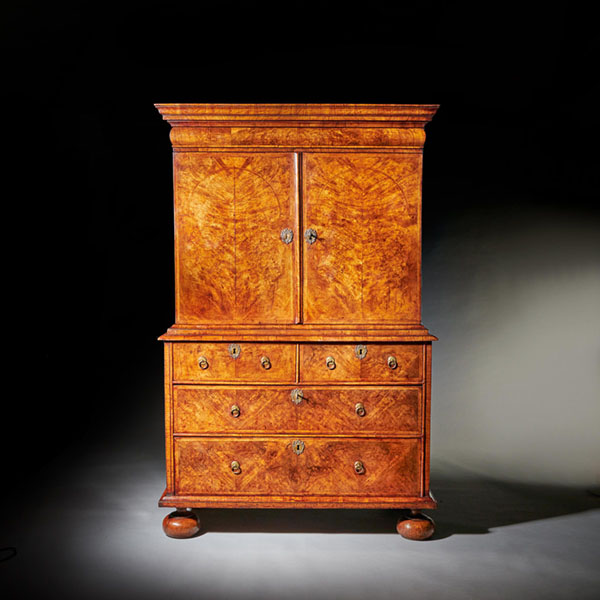
A Fine 17th Century William and Mary Burl Walnut Cabinet on Chest, Circa 1690
A Fine 17th Century William and Mary Burl Walnut Cabinet on Chest, Circa 1690 £27,800[wpforms_selector form_id="11387" show_title="on" _builder_version="4.22.1" _module_preset="default" custom_margin="-30px||||false|false"...
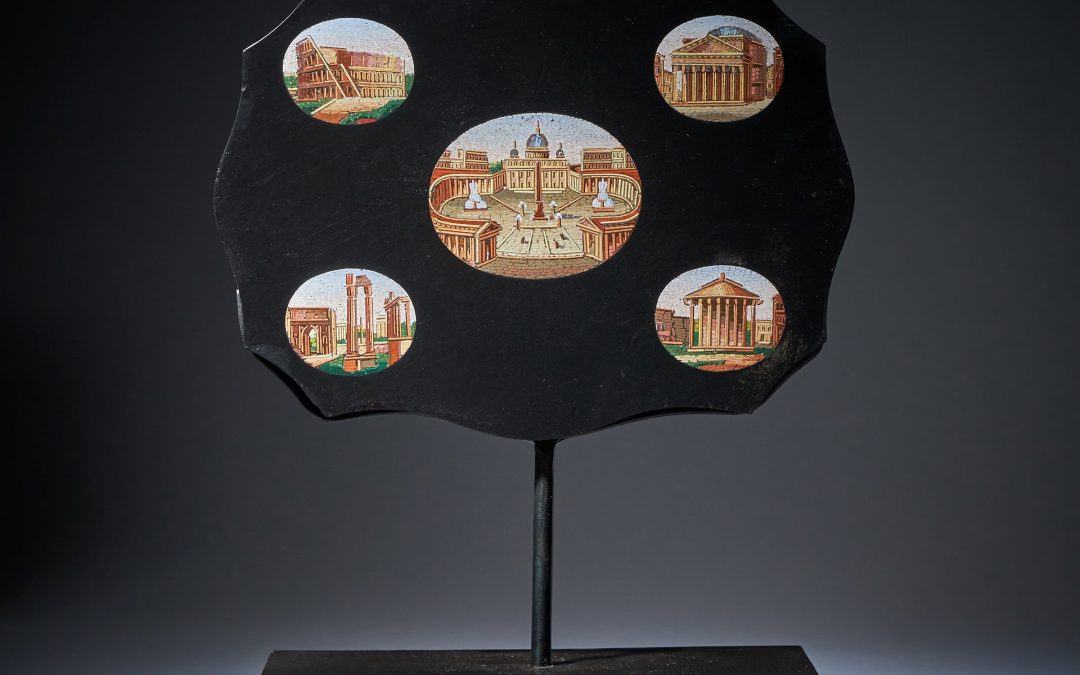
19th Century Grand Tour Micro Mosaic Tablet Depicting Italian Architecture
19th Century Grand Tour Micro Mosaic Tablet Depicting Italian Architecture £3,650Follow Us19th Century Grand Tour Micro Mosaic Tablet Depicting Italian Architecture A fine mid-19th century serpentine grand tour micro mosaic tablet or...
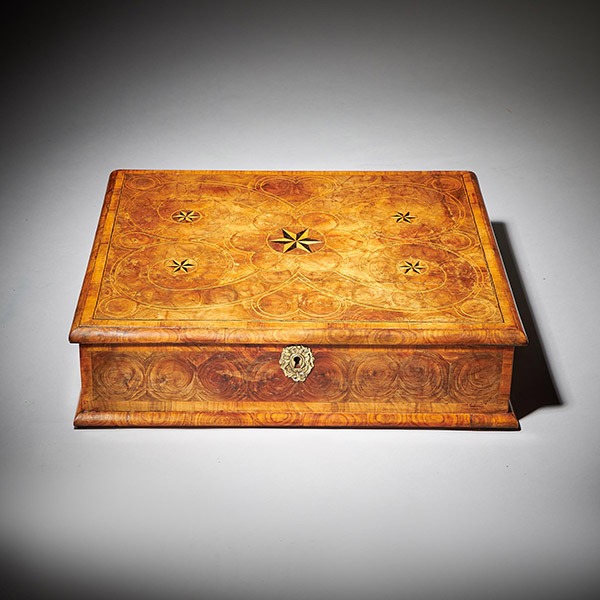
Large William and Mary 17th Century Inlaid Olive Oyster Lace Box, Circa 1690
Large William and Mary 17th Century Inlaid Olive Oyster Lace Box £5,500[wpforms_selector form_id="11387" show_title="on" _builder_version="4.22.1" _module_preset="default" custom_margin="-30px||||false|false" global_colors_info="{}"...
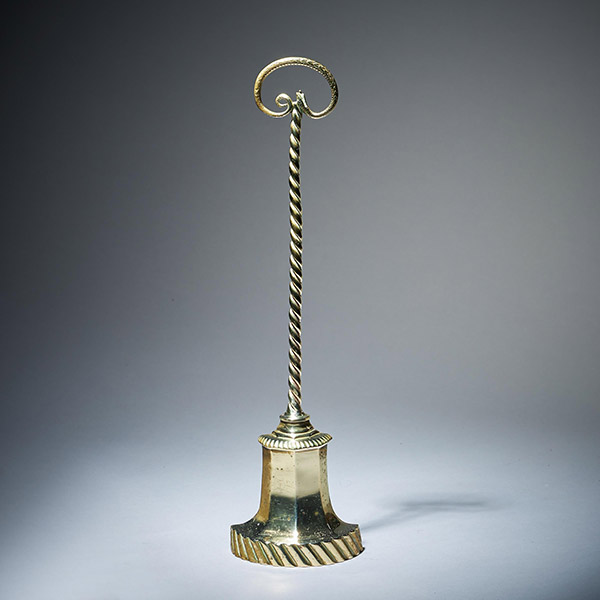
Early 19th Century High Regency Brass Snake Doorstop
Early 19th Century High Regency Brass Snake Doorstop £1,100Follow UsEarly 19th Century High Regency Brass Snake Doorstop A high Regency solid brass bell-shaped doorstop with snake handle, from the reign of George IV, Circa 1770. England The...
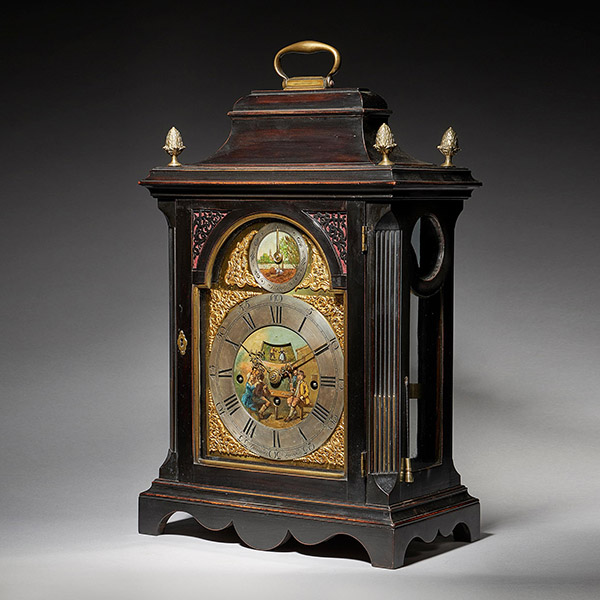
Extremely Rare George III 18th Century Quarter-Striking Bracket Clock, Signed
Extremely Rare George III 18th Century Quarter-Striking Bracket Clock, Signed Follow UsExtremely Rare George III 18th Century Quarter-Striking Bracket Clock, Signed An extremely rare George III 18th century ebonized quarter-striking bracket...

18th Century George III Carved Mahogany Serpentine Concertina Action Card Table
18th Century George III Carved Mahogany Serpentine Concertina Action Card Table £19,800Follow Us18th Century George III Carved Mahogany Serpentine Concertina Action Card Table A bold and impressive George III carved mahogany serpentine...

A Fine 17th Century William and Mary Burl Walnut Cabinet on Chest, Circa 1690
A Fine 17th Century William and Mary Burl Walnut Cabinet on Chest, Circa 1690 £27,800[wpforms_selector form_id="11387" show_title="on" _builder_version="4.22.1" _module_preset="default" custom_margin="-30px||||false|false"...

19th Century Grand Tour Micro Mosaic Tablet Depicting Italian Architecture
19th Century Grand Tour Micro Mosaic Tablet Depicting Italian Architecture £3,650Follow Us19th Century Grand Tour Micro Mosaic Tablet Depicting Italian Architecture A fine mid-19th century serpentine grand tour micro mosaic tablet or...

Large William and Mary 17th Century Inlaid Olive Oyster Lace Box, Circa 1690
Large William and Mary 17th Century Inlaid Olive Oyster Lace Box £5,500[wpforms_selector form_id="11387" show_title="on" _builder_version="4.22.1" _module_preset="default" custom_margin="-30px||||false|false" global_colors_info="{}"...

Early 19th Century High Regency Brass Snake Doorstop
Early 19th Century High Regency Brass Snake Doorstop £1,100Follow UsEarly 19th Century High Regency Brass Snake Doorstop A high Regency solid brass bell-shaped doorstop with snake handle, from the reign of George IV, Circa 1770. England The...

Extremely Rare George III 18th Century Quarter-Striking Bracket Clock, Signed
Extremely Rare George III 18th Century Quarter-Striking Bracket Clock, Signed Follow UsExtremely Rare George III 18th Century Quarter-Striking Bracket Clock, Signed An extremely rare George III 18th century ebonized quarter-striking bracket...

18th Century George III Carved Mahogany Serpentine Concertina Action Card Table
18th Century George III Carved Mahogany Serpentine Concertina Action Card Table £19,800Follow Us18th Century George III Carved Mahogany Serpentine Concertina Action Card Table A bold and impressive George III carved mahogany serpentine...
















